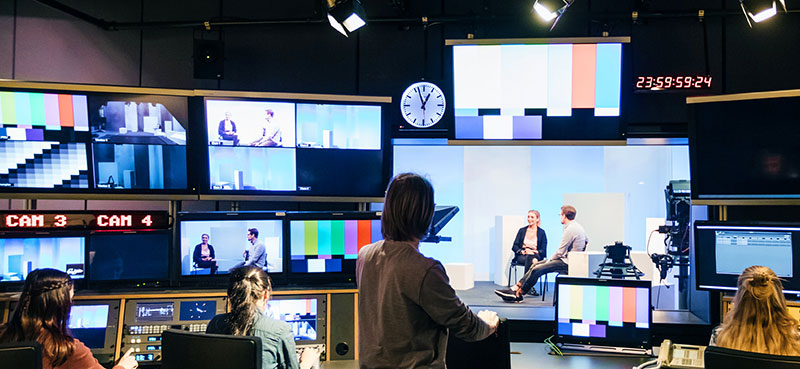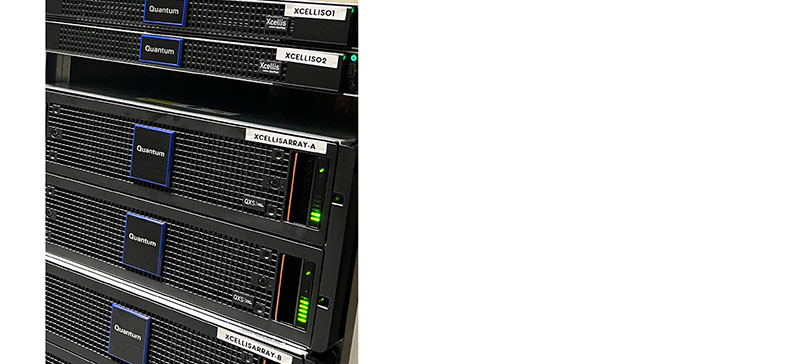Castilla–La Mancha Media renewed its growing archive to maintain public access to its cultural media, using Quantum to build an end-to-end storage system managing unstructured video.

Castilla–La Mancha Media (CMM) public broadcasting service in Toledo produces video content for the citizens of Castilla–La Mancha, an autonomous community of Spain southeast of Madrid. Its content, diverse information and entertainment programming, is broadcast across Spain and to other countries via a digital terrestrial television (DTT) channel and internet platforms.
Over its 20 years of operation, the organisation's content archive has grown considerably. It contains not only news and depictions of historical events from the region but also various entertainment programs. Preserving that material and making it available to citizens are essential aspects of supporting and protecting the region’s cultural identity.
Single Shared Storage Environment
To continue making archived content available while also keeping up with changing production requirements, the CMM team needed to update its storage environment. “The evolution of formats and new expectations of our staff and viewers made an update of the different filing system components crucial to support a good public service,” said Jesús Sanchez, technical director of CMM.
In particular, CMM needed a scalable storage platform that could handle fast-growing volumes of high-resolution content. Performance and flexibility were other top priorities. The CMM technical team wanted to make sure that users could access content from a variety of systems with a responsive experience. At the same time, the archive had to help them maintain availability and protect data. Any new storage platform they would purchase also had to integrate with the existing media asset management (MAM) system.

News programming on CMM.
Working with Datos Media Technologies, integrators serving the broadcast industry, the CMM team decided to implement a functionally complete storage environment built on Quantum systems, starting with the file system, StorNext. StorNext combines a single shared storage environment with data lifecycle management. This means CMM team members can collaborate directly, even when workflows span primary storage, extended online storage, multi-cloud storage and data tape–based archives.
From there, the system includes Quantum Xcellis Workflow Director, which gives high-speed shared access to stored content, and Quantum QXS-series hybrid arrays, which contain high-performance, low-latency storage. A Quantum Scalar i6000 data tape library houses scalable capacity and data protection for the archived material.
Tedial MAM Integration with StorNext 7
The Quantum environment integrates with CMM’s existing Tedial cataloguing and downloading system, which has been certified for StorNext 7. Having that integration in place made it possible for the organisation to implement the entire new environment without interrupting workflows.
“Taking into account the need to update the current Castilla–La Mancha Media file system, we opted to integrate a system from the one company, Quantum,” said Juan Francisco Navarro, Datos Media project manager. “With this installation, we have not only more storage, but also high availability of all resources.”

Tedial’s integration policy includes agents for rapid deployment, a media-centric Business Process Management (BPM) Engine and a library of BPM Building Blocks for process workflows. The company has developed APIs and plug-ins based on partnerships like the one with Quantum, and a Media Processing Manager, and is now working on docker-ised cloud-native modules and microservices. “While we updated the archive with the Quantum products, interrupting our security and production workflows was unnecessary,” said Jesús.
System Performance for Access and Administration
Running on StorNext, CMM users have the high performance, shared access required to retrieve and work with high-resolution content, including broadcast-grade HD content. At the same time, the QXS-series array is set up and tuned to deliver high levels of sequential I/O and extremely low latency while supporting large storage volumes.
StorNext also gives administrators the flexibility to match system performance with workflow demands. Agile connectivity options allow the CMM team to select from multiple types of networking and storage, including Fibre Channel and high-speed Ethernet. Different QoS and bandwidth management capabilities allow the administrators to make sure certain performance levels are met for particular clients.
With an end-to-end environment – that is, incorporating lifecycle and performance management, backup and recovery and so on -- built on StorNext, the CMM team does not have to spend a lot of time moving content from one storage system to another. Lifecycle management capabilities move files automatically from primary storage to the tape archive or cloud storage based on policies set by the CMM team. CMM can continue expanding its archive of regional content without adding manual work.

Quantum Excellis array.
Data Protection and Archive
Like all storage system users, CMM has to take steps to protect stored and archived content from potential security issues and to keep data continuously available to video production teams. To safeguard content from ransomware attacks or other intrusions, the Scalar i6000 tape library incorporates Active Vault, which manages media between a backup partition and an air-gapped (physically or logically separated) vaulted partition.
To keep content available, Scalar iLayer diagnostics software constantly monitors the tape library for potential issues, proactively. Extended Data Life Management (EDLM) capabilities also help determine if files will be protected and readable into the future.
As CMM continues to produce more content and generates larger, higher-resolution files, Quantum gives the team options for expanding its production storage and archive without having to rip and replace systems. For example, CMM can dynamically scale the QXS-series arrays by adding modules and disks, or scale the Scalar i6000 tape archive up to more than 12,000 slots and 192 drives -- a tremendous amount of archive capacity. A primary goal when building the system was minimising the time spent on backup infrastructure, and they find that with a scalable tape archive like the i6000, they have more freedom to focus on other work. www.quantum.com



